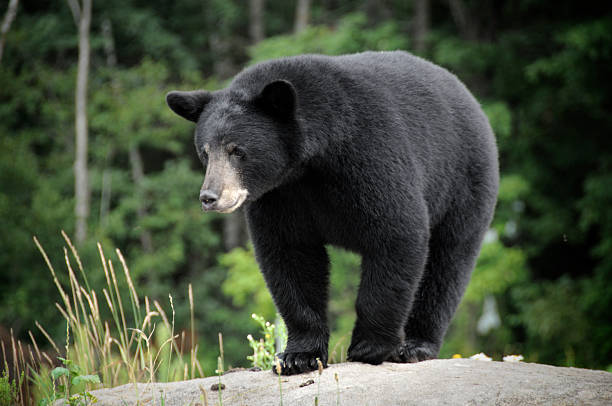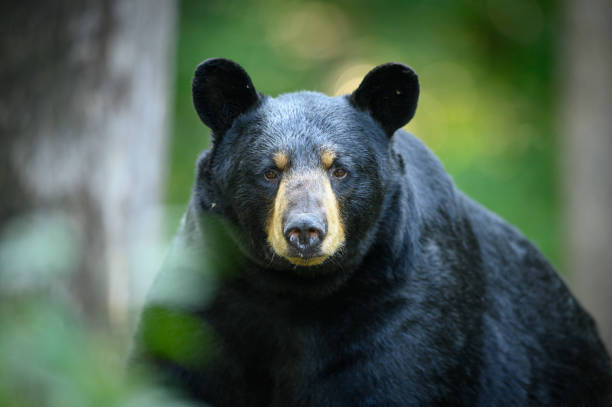Table of Contents
Scientific Classification
| Kingdom | Animalia |
| Phylum | Chordata |
| Class | Mammalia |
| Order | Carnivora |
| Family | Ursidae Genus |
| Genus | Ursus Species |
| Species | Ursus americanus |
| Scientific Name | Ursus americanus |
Description
The American black bear (Ursus americanus) is a sizable mammal found widely across North America. Despite their name, these bears can come in various colors, including black, brown, cinnamon, blonde, and even rare white.
Adult males typically weigh between 150 and 600 pounds (70 to 270 kg), while females are smaller, ranging from 90 to 300 pounds (40 to 135 kg). When standing on their hind legs, black bears can reach heights of 5 to 7 feet (1.5 to 2.1 meters). They possess strong, curved claws that aid in climbing trees, digging for food, and self-defense.
Known for their intelligence and problem-solving skills, black bears also have excellent memories, making them fascinating creatures in their natural habitat.
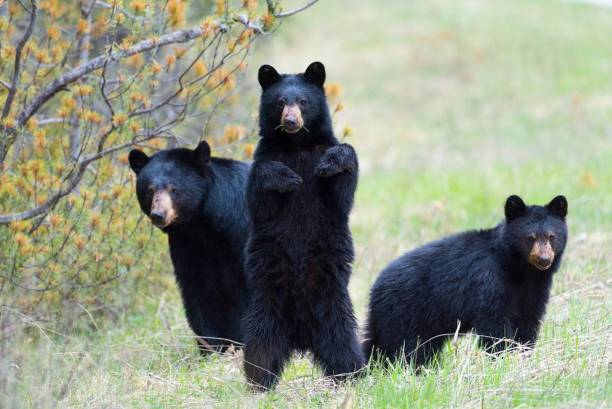
Distribution
The American black bear is found throughout North America, ranging from Canada and Alaska in the north to Mexico in the south. They inhabit 41 U.S. states and all Canadian provinces, with the exception of Prince Edward Island.
Historically, black bears had a much broader range. However, due to habitat loss and hunting, their distribution has decreased. Currently, populations are stable or even increasing in many areas thanks to conservation efforts.
Habitat
Black bears are found in a variety of habitats, such as:
Forests – Both deciduous and coniferous forests offer plenty of food and shelter.
Mountains – The rugged terrain provides protection and a sense of isolation.
Swamps and Wetlands – These environments are prevalent in the southeastern U.S., particularly in Louisiana and Florida.
Grasslands – While less common, some black bears can adapt to open spaces near forested areas.
Bears need large home ranges, which can vary from 15 to 80 square miles (40 to 200 square km) depending on the availability of food.
Diet
Black bears are omnivores, which means they consume both plant and animal matter. Their diet varies with the seasons:
Spring – They eat fresh vegetation, insects, and carrion.
Summer – Their diet includes berries, fruits, nuts, and insects such as ants and bees.
Fall – They focus on acorns, nuts, and other high-calorie foods to prepare for winter hibernation.
Occasionally – They may eat small mammals, fish, and food sources related to humans.
With a sense of smell that is seven times more acute than a dog’s, they can detect food from miles away.
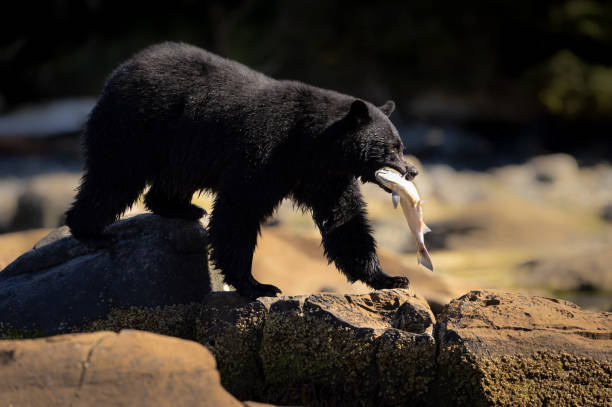
Behavior
Black bears are typically solitary animals. They only come together during mating season and when mothers are raising their cubs. While they are primarily active during the day, they may become nocturnal in areas with a lot of human activity.
Key Behaviors:
Hibernation – In colder climates, black bears hibernate for a period of 3 to 7 months, relying on their fat reserves.
Climbing Trees – Unlike grizzly bears, black bears are skilled climbers and often use trees for safety.
Curiosity – Renowned for their intelligence, they tend to investigate new objects and surroundings with caution.
Territorial Marking – They leave their mark on trees through claw scratches and scent markings.
Lifespan
In the wild, black bears typically live between 15 and 25 years. However, some individuals can reach over 30 years in protected environments. In captivity, their lifespan can extend even further, occasionally surpassing 35 years.
Mortality Factors:
- Hunting and poaching
- Habitat destruction
- Vehicle collisions
- Natural predation (primarily affecting cubs)
Reproduction and Lifecycle
Black bears have a slow reproductive cycle. Females usually give birth every two to three years.
Mating Season – Happens in June and July. Fertilized eggs wait to implant until fall.
Gestation Period – Lasts about 7 months.
Birth – Cubs are born in January or February, weighing only 8 to 12 ounces (230 to 340 grams).
Maternal Care – Cubs stay with their mother for 1.5 to 2 years, learning survival skills.
Sexual Maturity – Females mature at 3 to 5 years, males at 4 to 6 years.
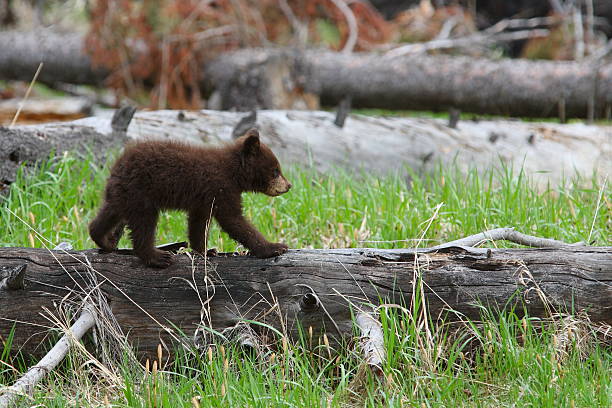
Predators
Adult black bears have few natural predators due to their size, but cubs face threats from:
Coyotes – Opportunistic hunters of young cubs.
Wolves – Rare but known to attack weak or young bears.
Mountain Lions – Occasionally prey on cubs.
Other Bears – Male black bears sometimes kill cubs.
Humans – The biggest threat due to habitat encroachment and hunting.
Adaptations
Black bears possess several adaptations that make them successful survivors:
Strong Limbs and Claws – Ideal for climbing, digging, and defending.
Keen Sense of Smell – Helps locate food and detect threats from miles away.
Thick Fur Coat – Provides insulation in cold environments.
Hibernation Ability – Reduces energy consumption during winter months.
Highly Adaptable Diet – Allows them to survive in varied environments.
Conservation Status
Current Status: Least Concern (IUCN Red List)
Due to conservation efforts, black bear populations are stable or even increasing in several regions. Nevertheless, they continue to encounter challenges:
Threats:
Habitat Loss – Urban expansion reduces their natural range.
Human-Wildlife Conflict – Bears searching for food often enter human areas, leading to conflicts.
Illegal Poaching – Some cultures hunt bears for body parts.
Climate Change – Alters food availability and hibernation patterns.
Conservation Efforts:
Wildlife Corridors – Safeguarding migration paths and decreasing interactions between humans and bears.
Regulated Hunting – Maintaining healthy bear populations through managed hunting practices.
Public Awareness Campaigns – Informing the public about bear safety and ways to coexist peacefully.
Bear-Proofing Measures – Implementing strategies to secure garbage and food supplies to reduce conflicts with humans.
Conclusion
The American black bear is an impressive species, showcasing intelligence, adaptability, and resilience. Even with the challenges posed by human activities, ongoing conservation efforts aim to secure their future. By safeguarding these magnificent animals, we contribute to the balance of North America’s ecosystems.
Black bears remind us of the wild beauty that exists in our world, a beauty that deserves to be preserved for generations to come.
